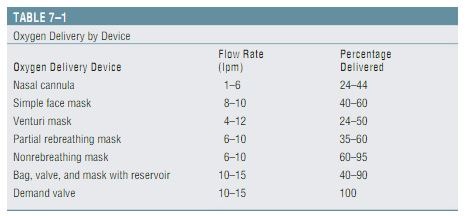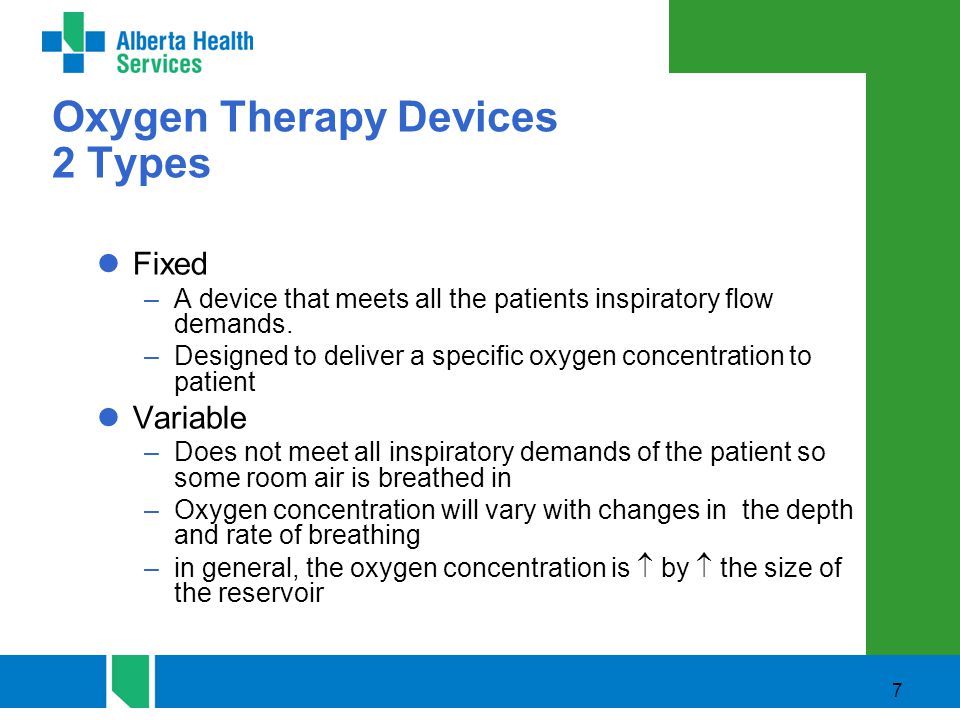This oxygen delivery devices and flow rates chart shows the o 2 % delivered measured for each tool. Oxygen should be reduced in stable patients with satisfactory oxygen saturation.

Chapter 30 Respiration Flashcards Medical Tech Paramedic School Critical Care Nursing
Oxygen delivery devices and flow rates are important concepts to understand as a nurse.

Oxygen delivery devices and flow rates emt. Co2 is removed by soda lime and water vapour by calcium chloride. A regulator is attached to the cylinder's top and works like a tap, allowing the safe adjustment of oxygen flow rate provided, in l·min −1. Used to deliver oxygen directly into the nostrils to a maximum flow rate of 2 litres per minute.
A simple face mask can deliver 35% to 60% oxygen with an appropriate flow rate of 6 to 10 l/minute. If a flow greater than this is used, it is uncomfortable for the child and can cause drying and potential bleeding of the nasal mucosa. Always make sure the reservoir bag is filled up.
1.) identify regulator and check for grommet/washer/ring. 4.)open tank, check for leaks. Has an oxygen reservoir bag and a valve that prevents rebreathing of exhaled air.
3.)correctly assemble tank with regulator closed. A device used to deliver a specific concentration of oxygen. Tube with a mask or nasal cannula).
Oxygen delivery devices flow rate (litre/min) approximate fio 2; Oxygen delivery devices and flow rates should be adjusted to keep the oxygen saturation in the target range. 2.) remove dust or debris (.
Ensures the patients breath in 100% o2. Confining and isolating fio2 can vary from 0.21 to 1.0 fungal infection risk. This reduces the overall oxygen needed during rest and with exercise.this table helps doctors choose the.typical fio 2 delivery settings are 24, 28, 31, 35 and 40% oxygen.
Oxygen should be signed for on the drug chart on each drug round. When discontinuing oxygen it is better to turn off. Oxygen flow is measured in liters per minute (lpm).
O2 tubes connected into the nostrils. Moist oxygen is less irritating to the respiratory tract. Below is an image of the fisher and paykel optiflow nasal cannula junior range for airvo 2.
Oxygen flow rate and fio2 nurse your own way oxygen. The variable performance devices were tested at oxygen flow rates of 2, 4, 6, 8, 10 and 15 l.min −1 as delivered by an ahe ball flow meter. Connect the oxygen tubing to the regulator (do not over tighten the tubing to the regulator).
Oxygen is delivered from taps above ward beds at 100% concentration. This table is intended to provide information from the technical point of view about oxygen delivery devices, including flow rate ranges, achievable fio 2, and possible oxygen delivery typical flow devices (single use) rate range oxygen sources. The percentage of oxygen inspired depends on the flow rate and the delivery device.
A resuscitation mask with an inlet valve may be used with emergency oxygen to give rescue breaths to breathing and nonbreathing victims. Available in adult, child, infant sizes.can deliver up to 55% oxygen.connect the oxygen tubing to the regulator (do not over tighten the tubing to the regulator).delivery devices work with different flow rates. When the tap is manually opened, the oxygen takes the line of least resistance to the patient via an oxygen delivery device (e.g.
Can deliver up to 55% oxygen. Temp.is regulated by flowing oxygen and air over ice. The flow rate can be set on the wall tap:
Pending on how it is used. 2009;6(9):1‐11 bailey p, thomsen ge, spuhler vj, et al.crit care med.jan2007;35(1):139‐145. These devices deliver a variable inspired oxygen concentration to the patient, which depends on the pifr.
This oxygen delivery devices and flow rates chart shows the o 2 % delivered measured for each tool. Oxygen tents transparent enclosures in larger sizes for adult pts. A pressure reading (barometer) displays the remaining oxygen.
• does not require a prescription • has a delivery rate of at least 6 lpm for 15 min. The fixed performance devices were assessed using the oxygen flow rates for the appropriate inserts, as. 22% to 60% oxygen with appropriate oxygen flow rates of 0.5 to 2 l/minute.
Technical specifications for oxygen therapy and monitoring devices27 table 3.2 guidance on oxygen delivery devices disclaimer: Nasal cannula (nc) flow rate. High flow nasal prong therapy (hfnp) see the hfnp nursing clinical guideline for more information.
A minimum of 6 l/minute of oxygen flow is needed 2to prevent rebreathing of exhaled carbon dioxide. It is then put through different devices at different rates to adjust the oxygen concentration that the patient inspires. The device chosen will depend on the patient requirements you found during your initial assessment.
Whether your patient is on chronic oxygen, or whether they are in acute respiratory failure , your patients will commonly have oxygen ordered and it will be up to you as the nurse. Depending on a patient's inspiratory effort (tidal volume, 'speed' of inspiration and respiratory rate) the pifr can often exceed the flow rate at which oxygen or an oxygen/air mixture is supplied by the device, meaning that at the time of pifr. The air changes 20 times/hour.
Oxygen delivery devices and flow rates emt. Medical oxygen requires a prescription for use. Weaning and discontinuation of oxygen therapy.

Ppt - Chapter 8 Powerpoint Presentation Free Download - Id3344606

Low Flow Devices Vs High Flow Devices Supportoxygenationrespiratory Respiratory Therapy Notes Respiratory Therapy Medical Knowledge

Chapter 7 Meds - Treatment Of Cardiovascular Emergencies Flashcards Quizlet

Emergency Oxygen Administration 2012 Ems Safety Version A

Oxygen Delivery Devices And Strategies For H1n1 Patients - Ppt Download

Ems Oxygen Admin Flowchart Flow Chart Oxygen Lung Cleanse

Oxygen Delivery Systems Chapter 38 Flashcards Quizlet

Pin On Ems

Pin By Carey Allen On Respiratory Therapist Icu Nursing Nurse Emergency Nursing

Oxygen Delivery Devices - Ppt Video Online Download

Venturi Mask Flow Rate - Google Search Nursing Notes Venturi Radiography

Pin On Fundamentals Of Nursing

Which Oxygen Delivery Device Should I Choose - Youtube

Oxygen-delivery Devices Chapter 10 Diagram Quizlet

Oxygen Administration What Is The Best Choice Rt

Emtparamedics Mnemonics Cheat Sheet - Diyjoy Emt Study Lpn Schools Mnemonics

Nursing Archives Health And Willness

Pin On Respiratory Therapy

Emergency Oxygen Administration 2012 Ems Safety Version A